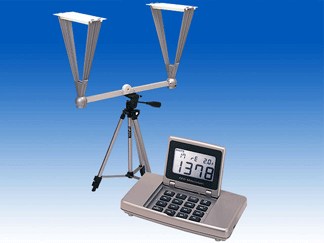|
CED Millennium Chronograph  We are all suckers for numbers, to a certain extent. We tend to believe a number once it is published, not wanting to consider how accurate it is, or may be. Our economy hinges on numbers, even though trade reports and surveys are continually changed, revised, and updated. That's just the human condition. We will accept a "light transmission" number for a scope, but our scope never does have the stated values, exactly. It really can't. Whether odometer, tachometer, speedometer, Nielsen ratings, "studies" that tell us that coffee is good for us (or bad), consumer confidence reports, ballistic coefficients and, yes, catalog muzzle velocities, we all like to take comfort that "the number" we have is absolute. Just as a choke tube that is marked "modified" means no particular pattern percentage at all, stated velocities all too often are just that: stated, not the same as the results we obtain in our unique environment, using our unique rifles. Too often, you'll hear where other people want someone else to tell them what velocities to expect out of their rifle. Perhaps even sillier yet, folks will often bicker because their chrono out of their rifle says one number, but the other fellow's number is 50 or 75 fps different. Well, it should be. Even assuming that rifles, lots of powder, primers, and so forth are all absolutely identical, which they clearly are not, various models of chronographs themselves may vary by up to about 8%. Crude, cheap old chrony's tend to clock slower as time goes by. Temperature and altitude changes things. Temperature of barrel, powder, primer, and lighting balance of the sensors introduces variables in velocity. Spacing of the sensors affects chronograph accuracy, as can cell phone transmissions and high tension lines. As Dr. Ken Oehler has mentioned to me, we never do know exactly what part of the bullet a sensor sees when it is tripped, front, back, or somewhere in the middle. With Dr. Oehler's units leaving the consumer chronograph market, the best chronograph available to the consumer is the subject of this review: the CED Millennium Chronograph. The CED Millennium, sometimes known as "the talking chronograph," has an unparalleled feature set. It is endorsed by IPSC for official use, and it is the official chronograph for more USPSA / IPSC championships than any other chronograph available today. Rather than a LCD readout built into the box on the lower-end chronographs, the CED has a very large, remote LCD unit that attaches to the sensors by the supplied 20 ft. of shielded cable. You'll never destroy the LCD of the CED, because you are never shooting at it. Setting up the CED is easy. The "brains" are in the LCD box, powered by a 9V battery. The large LCD screen folds flat for packing making this unit effortless to transport. The remote sensors plug into the ends of a folding bar ("the two foot bracket") that attaches to any standard tripod. The set-up is simple. Just screw the bar onto a standard tripod (I use a Slik tripod, but any medium to heavy-duty tripod works well). I've been using this unit so much that I just leave the bar permanently attached to the tripod. The sensors plug into each end, and the side rails and diffuser screens slide right on. The first sensor's jack is plugged into the "start" jack on the main unit; the second sensor's jack goes into the "stop" jack. Press the "ON" button on the tactile keypad, and you are good to go. The CED holds 220 shots in memory, into one string or up to 20 strings as you prefer. Highest velocity, lowest velocity, average velocity, standard deviation, and extreme spread are all recorded for you. PC software is included, so you can upload your data when you get back from the range for analysis and printing via serial port. There is a HP IR output included as well, but Hewlett-Packard has essentially obsoleted their own port-it will work with the old H-P thermal printers, though. The CED records velocities from 50 to 5000 fps, recommended temperature operating range is 32 to 122 degrees F, but it should operate down to zero. The Millennium CED has been tested vs. Doppler radar lab equipment, and was found to be within 99.8% of lab radar. There is an infra-red lighting kit option available as well, if you need to shoot indoors or in the middle of the night. What the CED Millennium offers is the best consumer chronograph on the market today, by a substantial margin. You won't find Dr. Oehler disagreeing. If you are serious about reloading, load development, muzzleloading, and want to have the best idea of what your firearms are really doing, you can't do better than the CED Millennium. Right now, it is not just "an option," but the only real option in quality consumer chronographs. I have seven or so chronographs I've used over the years, but for the foreseeable future everything is going through CED's. I've been using two of them for most every range session these days and cannot recommend them highly enough. |